Synthesizers are the cornerstone of modern music production.
They can generate a vast series of sounds, from replicating traditional instruments to creating entirely new audio experiences.
Synthesizers also serve as tools for experimentation and innovation in music, allowing you to shape soundscapes that were once unimaginable.
As a music producer, it’s important to know all about synthesizers to fully harness their capabilities and enhance your music.
Plus, helps you stay ahead in the ever-evolving landscape of digital music production.
In today’s article, we’ll break down:
- The basic concept of synthesizers ✓
- Synthesizers in studio and live settings ✓
- The distinctive qualities of analog & digital synthesizers ✓
- Integrating drum machines with synthesizers ✓
- Key features & innovative functionalities of synthesizers ✓
- Technical aspects including filters & frequencies ✓
- The significance of MIDI in synthesizer production ✓
- Personalizing your synthesizer with settings & add-ons ✓
- Troubleshooting common synthesizer problems ✓
- Proper maintenance of your equipment ✓
- Creative applications of synthesizers in music ✓
- Much more ✓
By the end of this article, you’ll possess an all-encompassing understanding of synthesizers in the context of music production.
Plus, you’ll be equipped to leverage their full potential, creatively integrate them into your work, and operate them with the finesse of a true professional.
Whether you’re crafting the next chart-topping hit or exploring new realms of electronic music, mastering synthesizers is pivotal.
So, let’s dive in…
Table of Contents
What are Synthesizers?
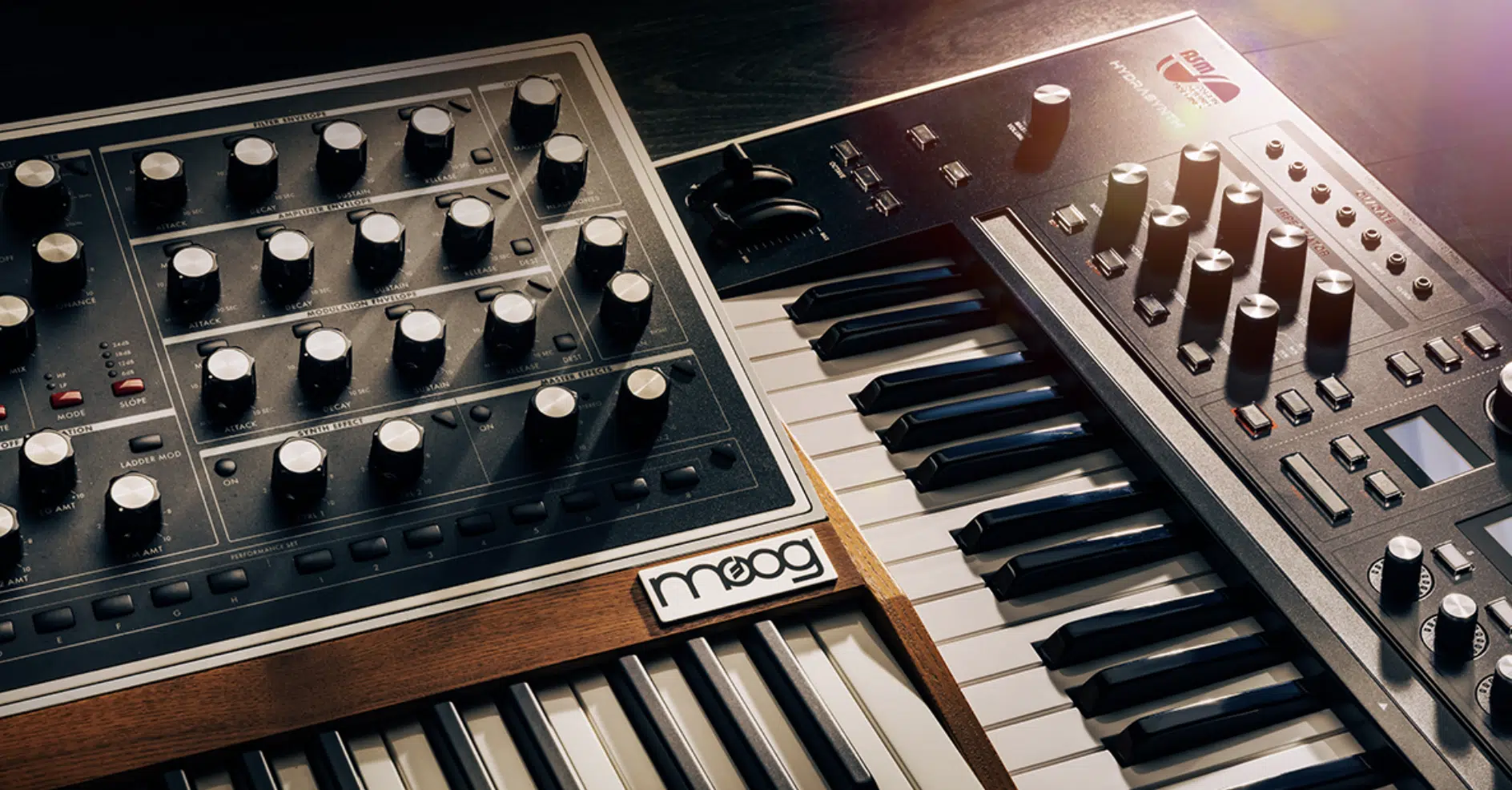
Synthesizers, at their core, are electronic instruments that generate sound.
They’ve evolved significantly since their inception, becoming central to modern music production.
Synthesizers manipulate electrical signals, transforming them into audio sounds that can range from mimicking traditional instruments to creating otherworldly tones.
The beauty of synthesizers lies in their versatility, including features like:
- Oscillators
- Modulators
- Filters
This versatility makes them a staple in studios and on stages across the world.
Synthesizers aren’t just musical instruments 一 they can enhance your tracks in more ways than you can imagine.
They have opened doors to new genres and styles.
Their impact is evident in various ways, across countless musical landscapes, from pop and rock to electronic and experimental music.
As a tool, they provide musicians with a platform to express their creativity and push the boundaries of sound.
Synthesizers in Studio and Stage
Now, let’s delve deeper into how synthesizers have become indispensable in both studio settings and live performances.
-
Producing Studio Sounds with Synthesizers
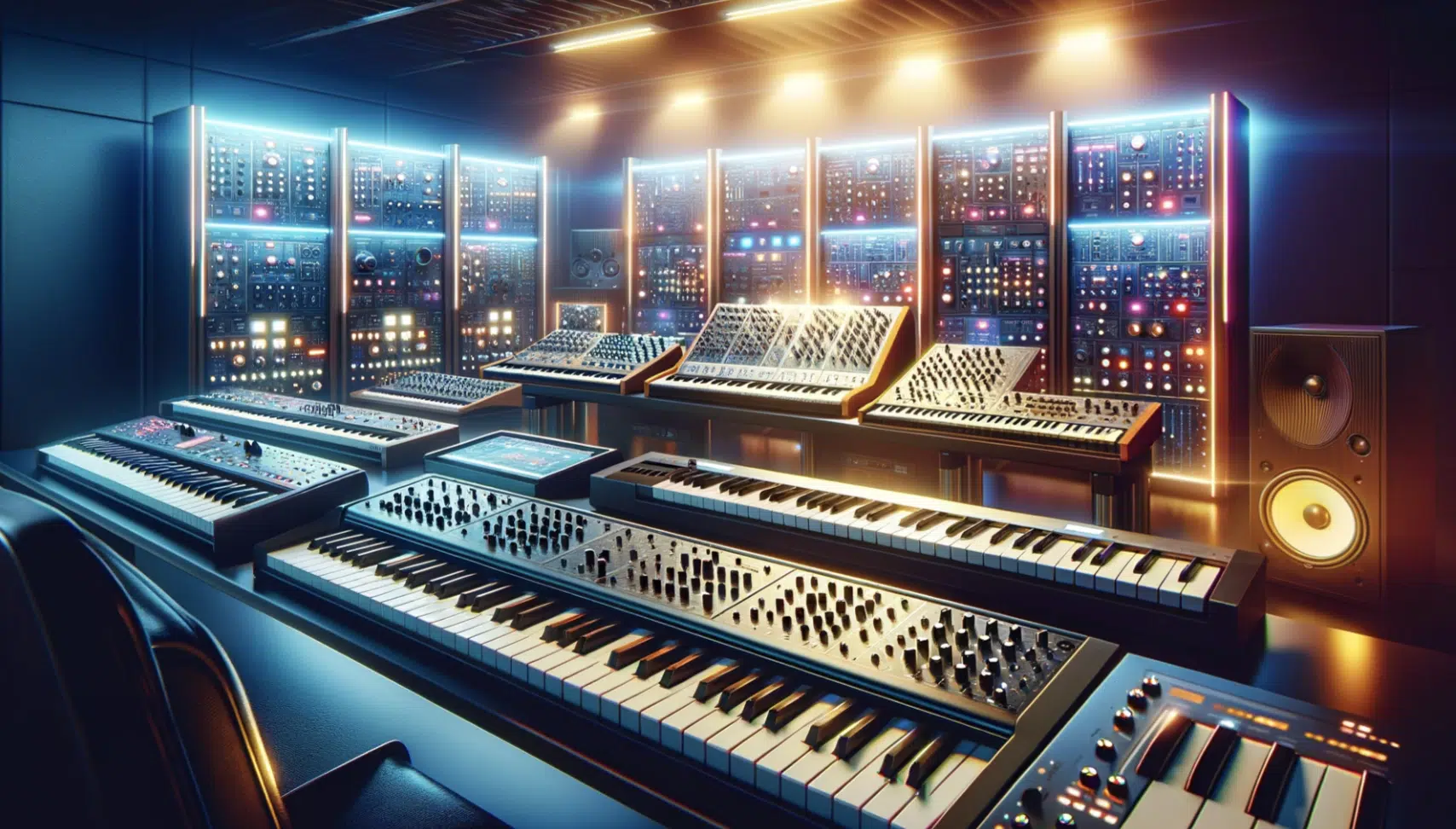
In the studio, synthesizers are a powerhouse, bringing richness and depth to music.
They help you layer sounds and create complex audio landscapes.
The use of synthesizers in the studio has revolutionized music production 一 offering an unprecedented level of control over your sound.
Synthesizers’ ability to replicate a wide range of instruments, from strings to brass, makes them invaluable in the studio.
They not only save space and time but also open up possibilities for sound manipulation that traditional instruments can’t offer.
As a result, they’ve become a mainstay in the music production process.
-
Synthesizers in Live Performance Dynamics
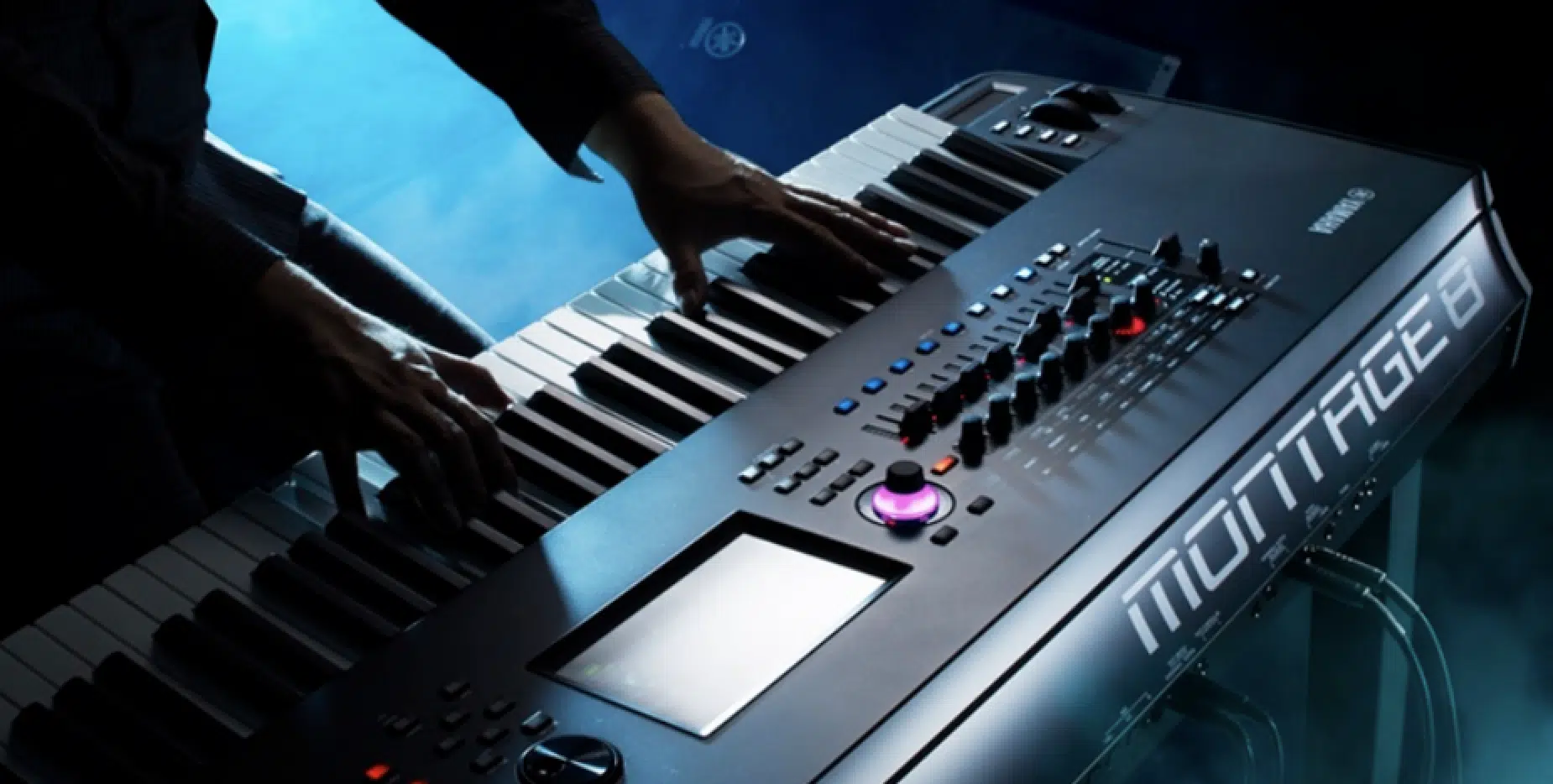
On stage, synthesizers transform live performances, providing musicians with a dynamic tool to engage their audience.
They allow for real-time sound manipulation, adding an element of spontaneity and uniqueness to each performance.
The integration of synthesizers in live setups has changed the face of concerts and shows, making them more interactive and immersive.
Performers use synthesizers in many ways, like:
- Enhancing their live sound
- Creating ambient backdrops
- Driving the rhythm of their music
Their adaptability makes them ideal for producing in live settings, where flexibility and reliability are crucial.
With synthesizers, musicians can experiment and improvise sounds they love 一 bringing a fresh and exciting element to their live performances.
-
Analog Synthesizers
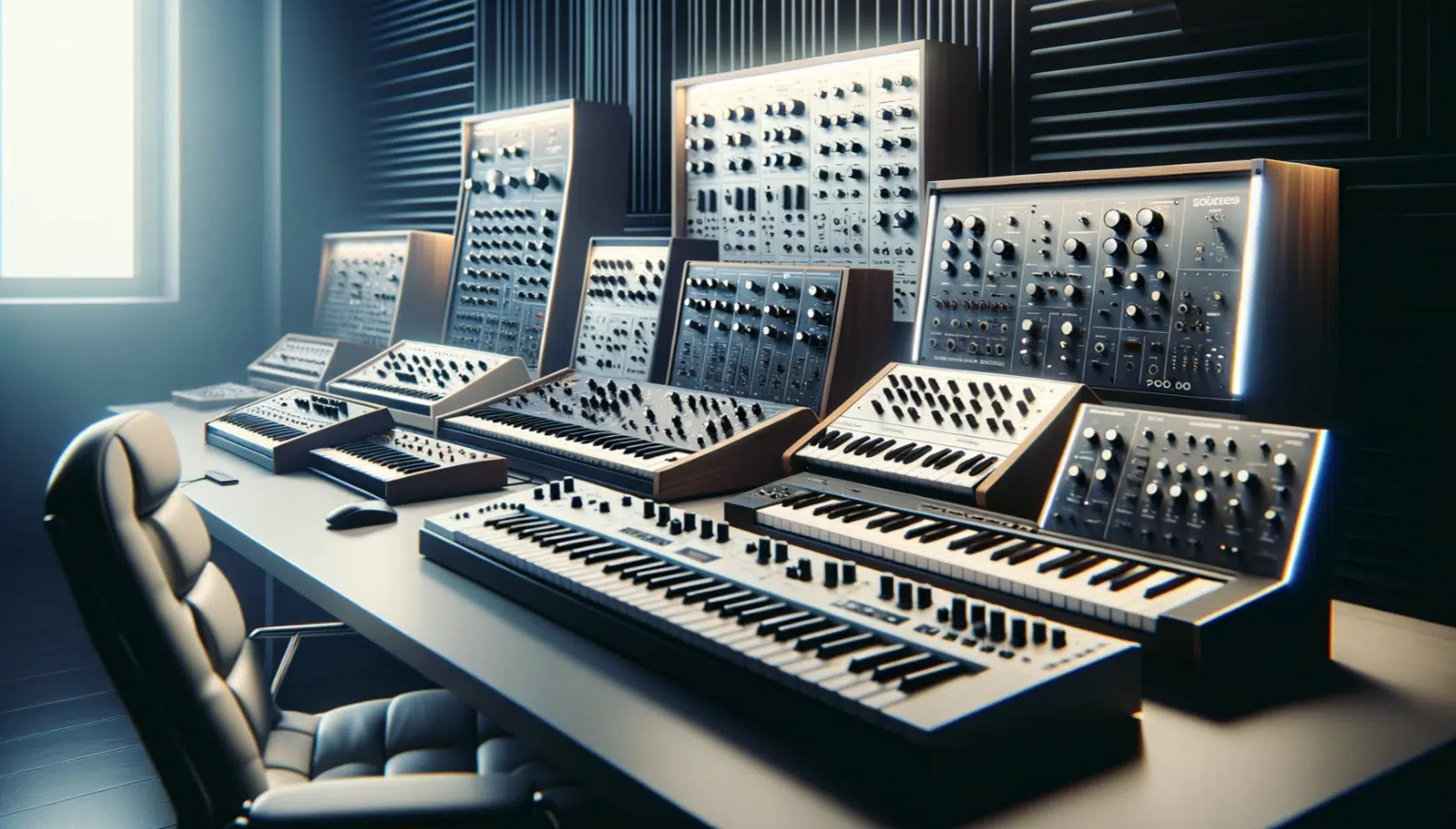
Analog synthesizers are renowned for their warm, nostalgic, rich sounds.
They generate sound using analog electronics and are often praised for their organic and nostalgic qualities.
The resurgence of interest in vintage gear highlights the timeless appeal of analog synthesizers in modern music production.
Analog synthesizers are cherished for their unique imperfections 一 subtle variations and warm distortions that digital synthesizers often struggle to replicate today.
The tactile experience of using knobs and sliders to shape sound adds to their charm.
This makes them a favorite among purists and enthusiasts, from America to Germany and everywhere in between.
-
The Digital Synthesizer Revolution
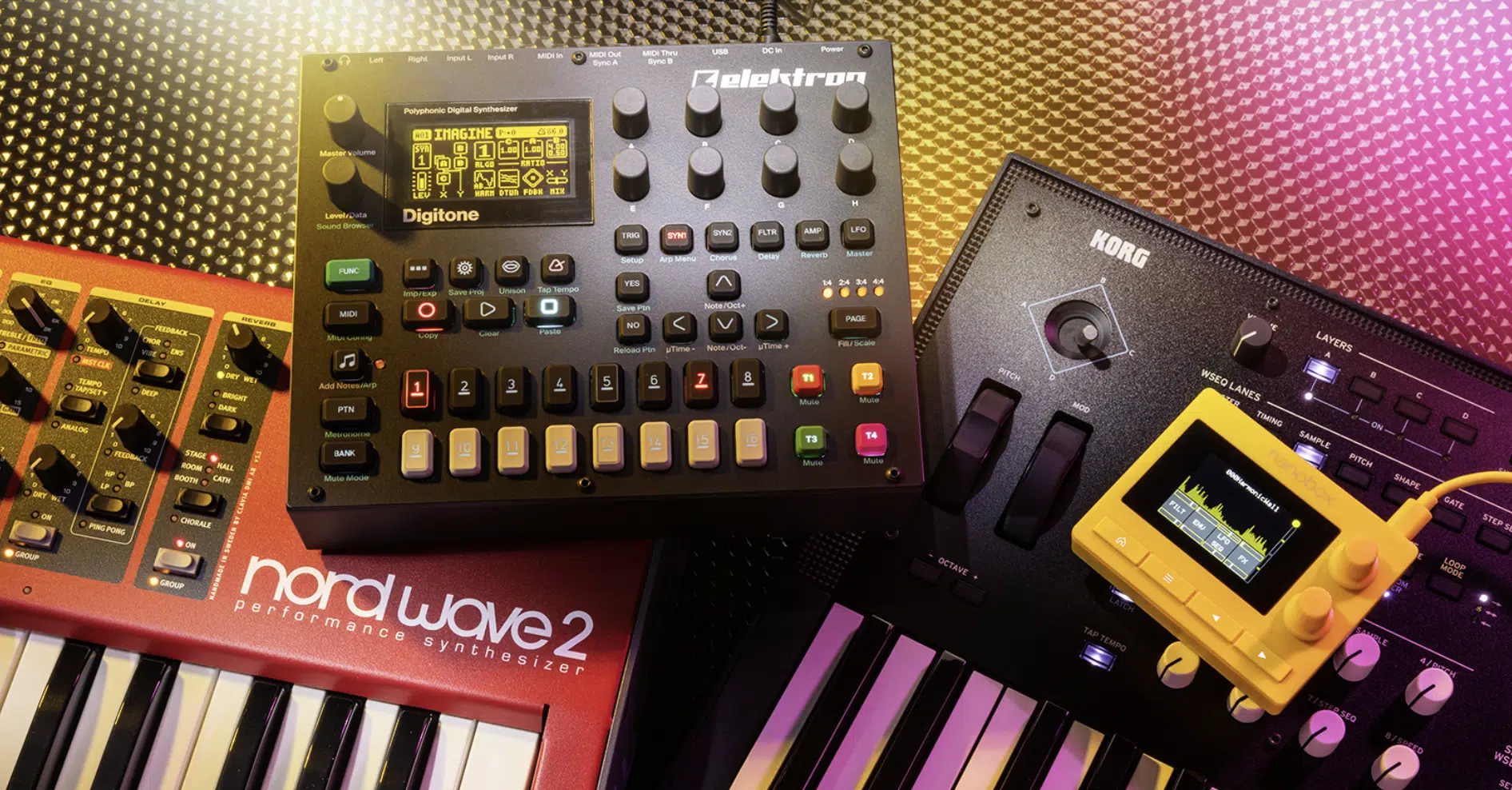
The advent of digital synthesizers marked a significant shift in music production.
These synthesizers, of various prices, use digital signal processing (DSP) to generate sounds, offering greater precision and versatility.
They’ve expanded the sonic possibilities beyond stock sounds 一 allowing for more complex and varied soundscapes.
Digital synthesizers are often more compact and portable than their analog counterpart series, making them suitable for musicians on the go.
They also tend to be more affordable, bringing synthesizer technology within reach of a broader range of artists and producers.
The flexibility and accessibility of digital synthesizers have made them a popular choice in modern music production.
-
Integrating Drum Machines with Synthesizers
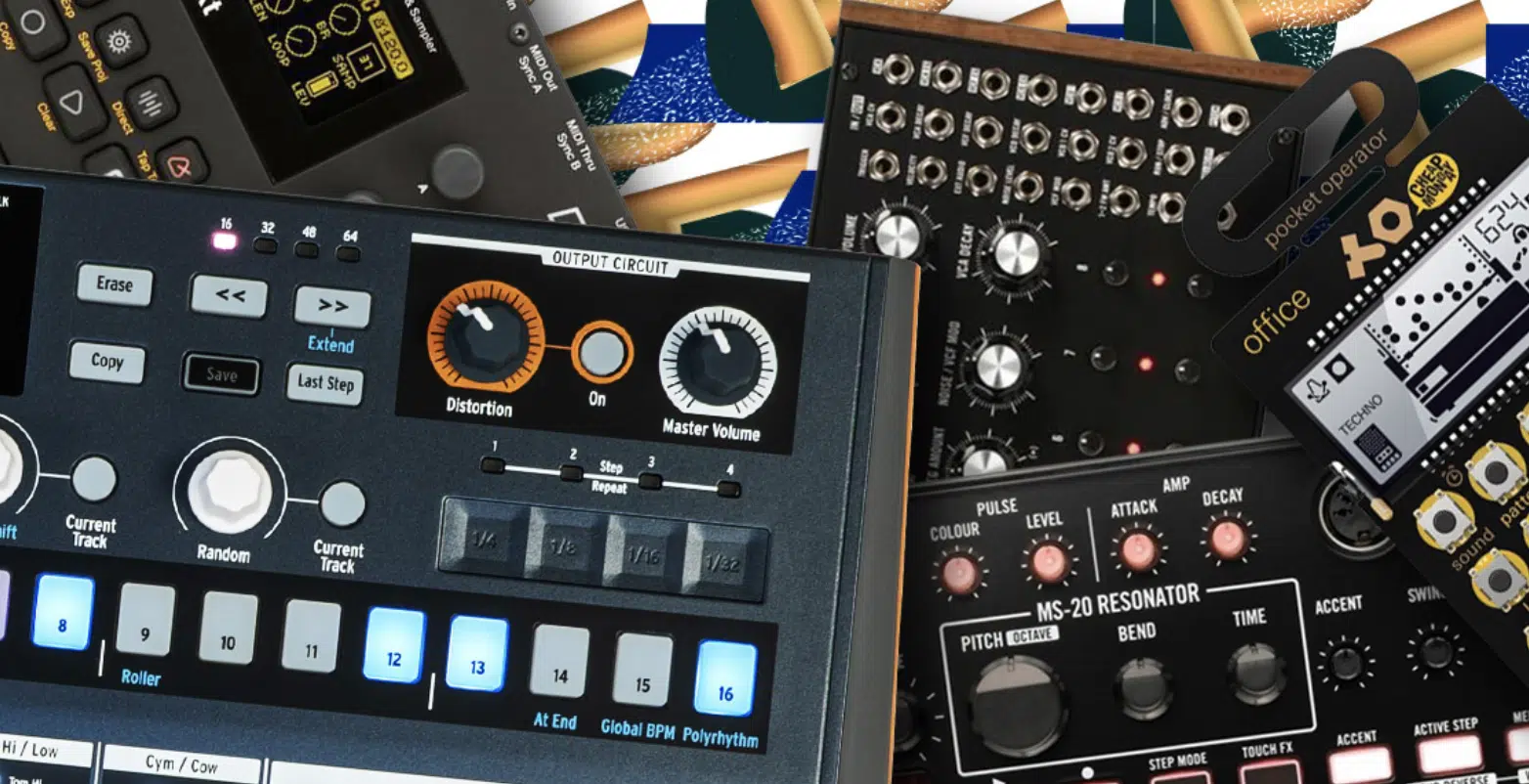
Drum machines have become an integral part of music production, especially in genres like hip-hop, electronic, and dance music.
They provide a stock and programmable rhythm section, which, when combined with synthesizers, creates a powerful tool for music creation.
The integration of drum machines with synthesizers opens up new avenues for creativity.
Producers can layer synthesized melodies with rhythmic patterns 一 crafting unique and compelling soundscapes.
This combination has become a signature sound in various music genres.
It showcases the versatility and creative potential of electronic instruments in endless ways.
Drum machines, with their precise timing and diverse sound libraries, complement the expressive capabilities of synthesizers.
Together, they form a formidable duo that can produce a complete musical experience, covering both melodic and rhythmic elements.
Synthesizer Features: Breaking it Down
Synthesizers come packed with a range of stock features you can checkout that allows for extensive sound manipulation and creativity. Let’s dig a little deeper in how you can use them to create legendary beats.
-
Essential Features for Synth Mastery
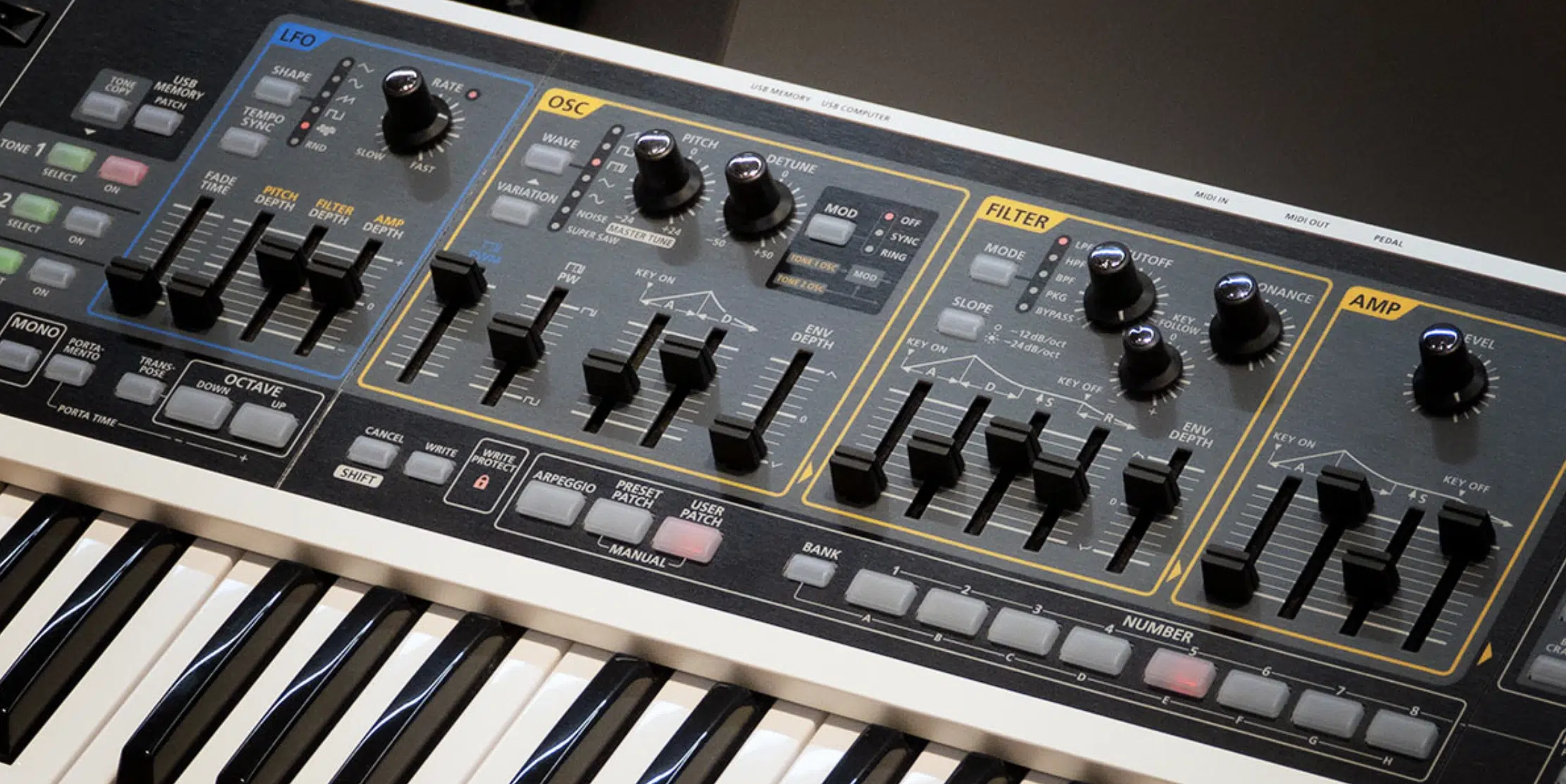
Understanding the essential features of synthesizers is crucial for mastering their potential.
Some key features are:
- Oscillators 一 which generate the raw sound.
- Filters 一 which shape the tone, are fundamental to synthesizer operation.
- Envelopes and LFOs 一 which further sculpt the sound.
They all add dynamics and movement, needed to stand out.
Learning how these features interact is a significant step toward mastering synthesizers.
Oscillators set the initial sound or ‘waveform,’ which can then be molded using filters that alter frequencies to create different textures.
Envelopes control aspects like attack and decay, determining how a sound evolves over time.
LFOs (Low-frequency Oscillators) add modulation, creating vibrato or tremolo effects.
These features are pivotal in shaping the character and feel of the music you produce and the place you bring your audience.
-
Innovative Features in Modern Synthesizers
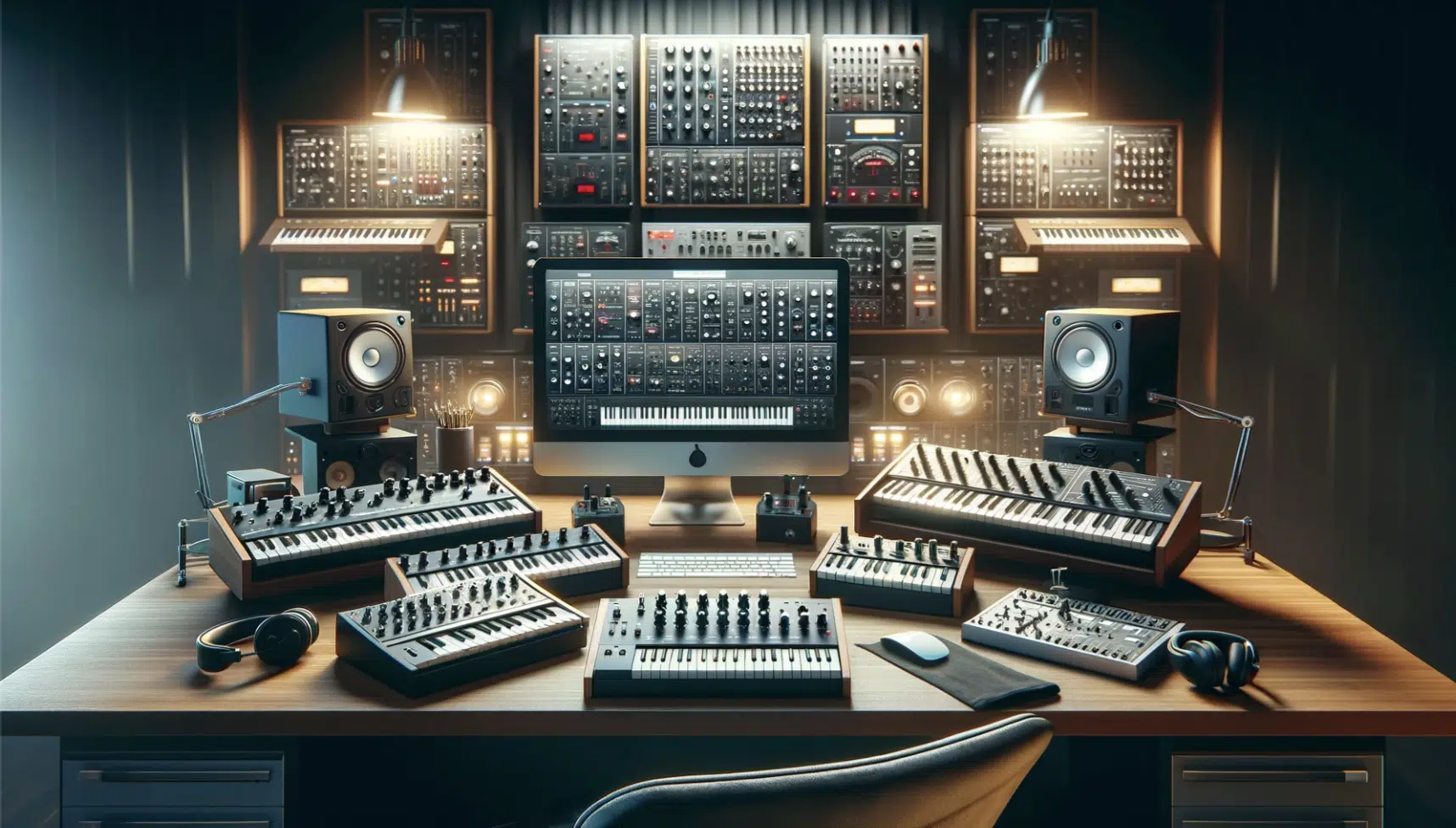
Modern synthesizers go beyond basic sound generation, offering various innovative features.
These may include:
- Advanced modulation options
- Built-in effects like reverb and delay
- Extensive patch memory for saving and recalling sounds
Some models offer unique synthesis methods like wavetable synthesis or FM synthesis all in one place.
This opens up a world of sound possibilities close to your heart.
These innovative features empower you to push the boundaries of sound design, which is a sign of professionalism.
The ability to intricately craft and manipulate sound with modern synthesizers has led to the emergence of new music genres and sonic landscapes.
It displays the endless possibilities of electronic music production.
Technical Aspects of Synthesizers
Synthesizers are not just about the sounds they produce for any subject or topic, but also about understanding the technical aspects that make these sounds possible.
-
Mastering Synthesizer Filters
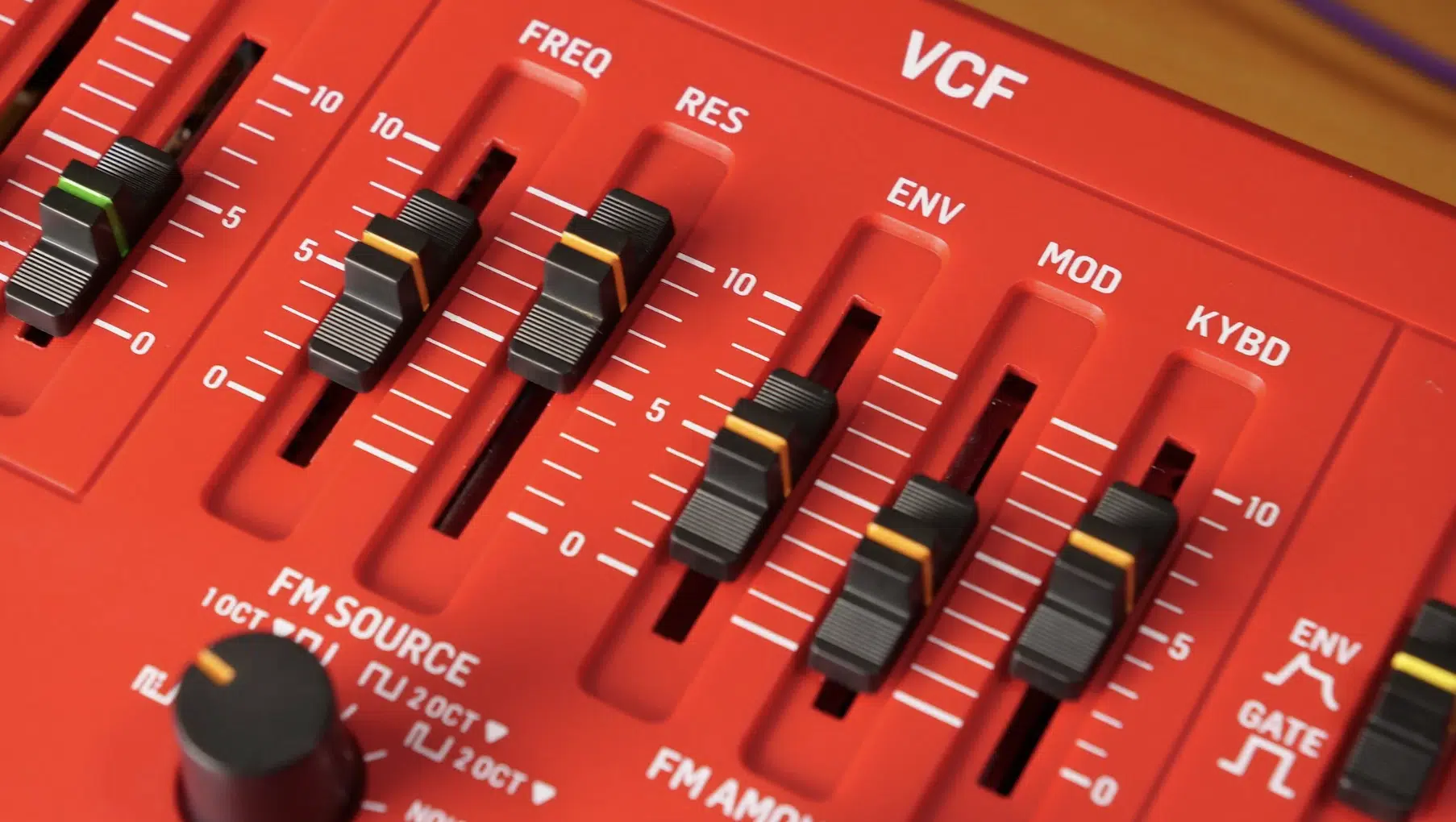
Filters are a critical component of synthesizers, shaping the sonic characteristics of the sound produced.
They work by selectively emphasizing or attenuating certain frequencies.
Low-pass filters, for example, allow low frequencies to pass through while cutting off the highs 一 which can create a warmer, more subdued tone people love.
Understanding and effectively using filters can dramatically change the texture and mood of the music.
Experimenting with different filter types and settings can lead to discovering unique sounds, making filters a key tool in the synthesizer arsenal for any music producer.
-
Understanding Synthesizer Frequencies
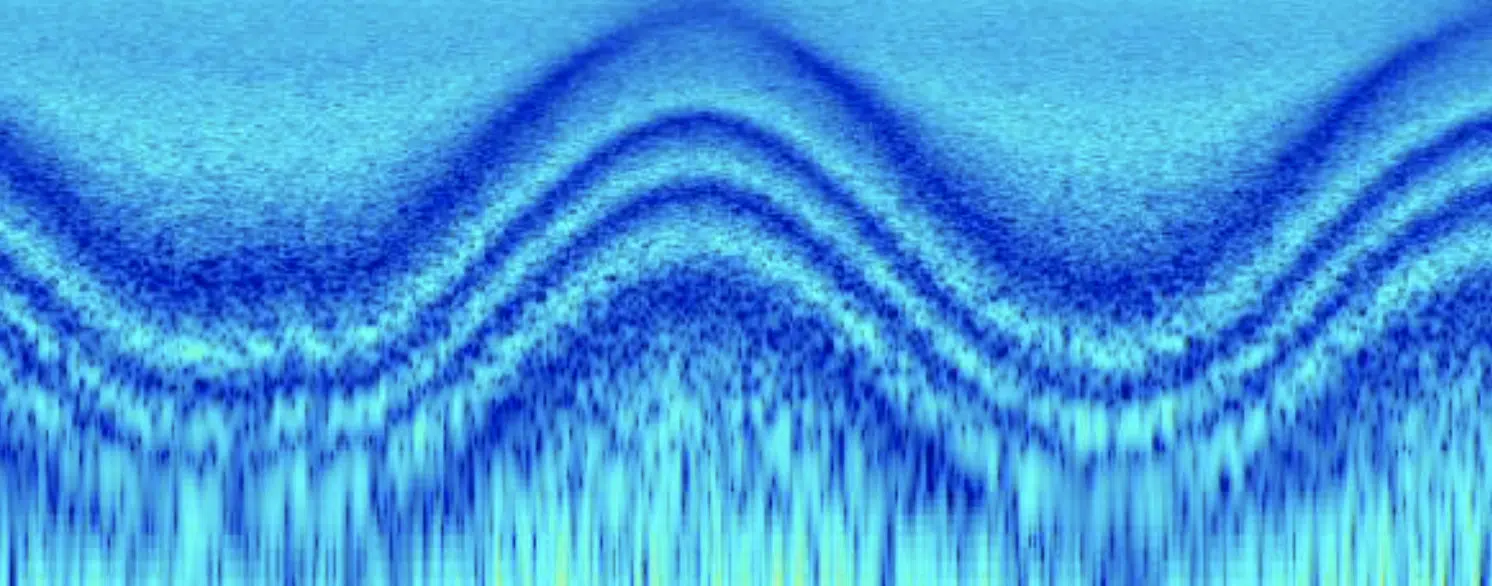
Frequencies are the backbone of synthesizer sound.
Each note played on a synthesizer deals with a specific frequency, with lower notes having lower frequencies and higher notes having higher frequencies.
Synthesizers allow for precise control over these frequencies 一 enabling you to create harmonically rich and intricate sounds.
Manipulating frequencies can involve:
- Adjusting oscillators
- Fine-tuning modulation sources
- Employing frequency-based effects like EQ
A deep understanding of how frequencies work and interact is essential for crafting professional-quality sounds with synthesizers.
As well as making your music stand out and generate serious momentum.
-
MIDI in Synth Production
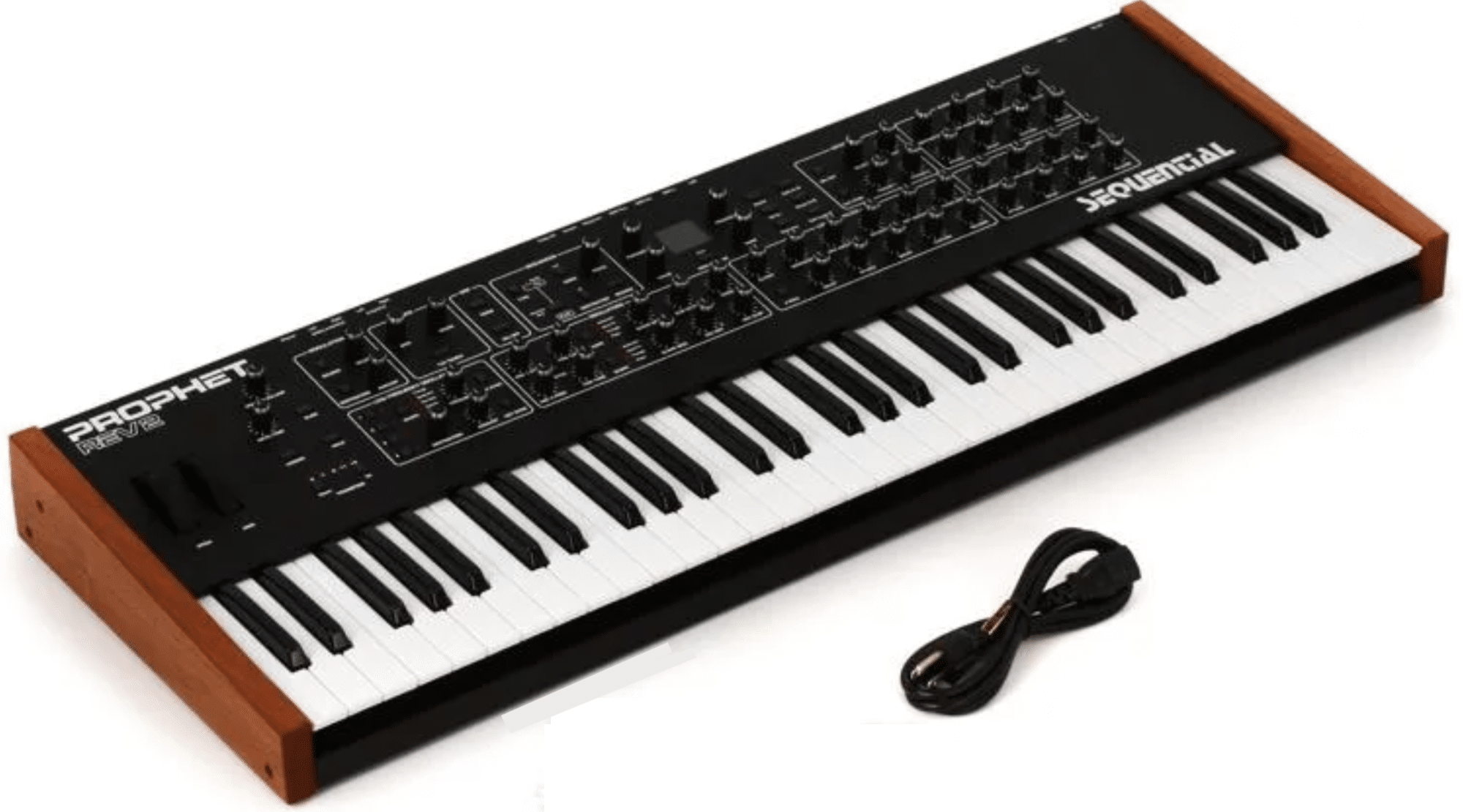
MIDI (Musical Instrument Digital Interface) plays a crucial role in modern synthesizer production.
It’s a standard that allows synthesizers, computers, and other electronic musical instruments to communicate and synchronize with each other.
MIDI sends information about how music is played (the notes, the velocity, the duration) but not the sound itself.
Using MIDI, producers can control various aspects of the synthesizer from a computer or another MIDI instrument.
This includes:
- Triggering notes
- Adjusting parameters
- Even automating changes over time
MIDI integration has become a staple in digital music production, so you can receive more complex and precise control over synthesizers.
So, take a page from professionals and make sure to incorporate it.
Customizing Your Synth Experience
Personalizing the synthesizer experience is key to creating a sound that truly represents your musical identity today, tomorrow, and the next day.
-
Personal Preferences in Synth Settings
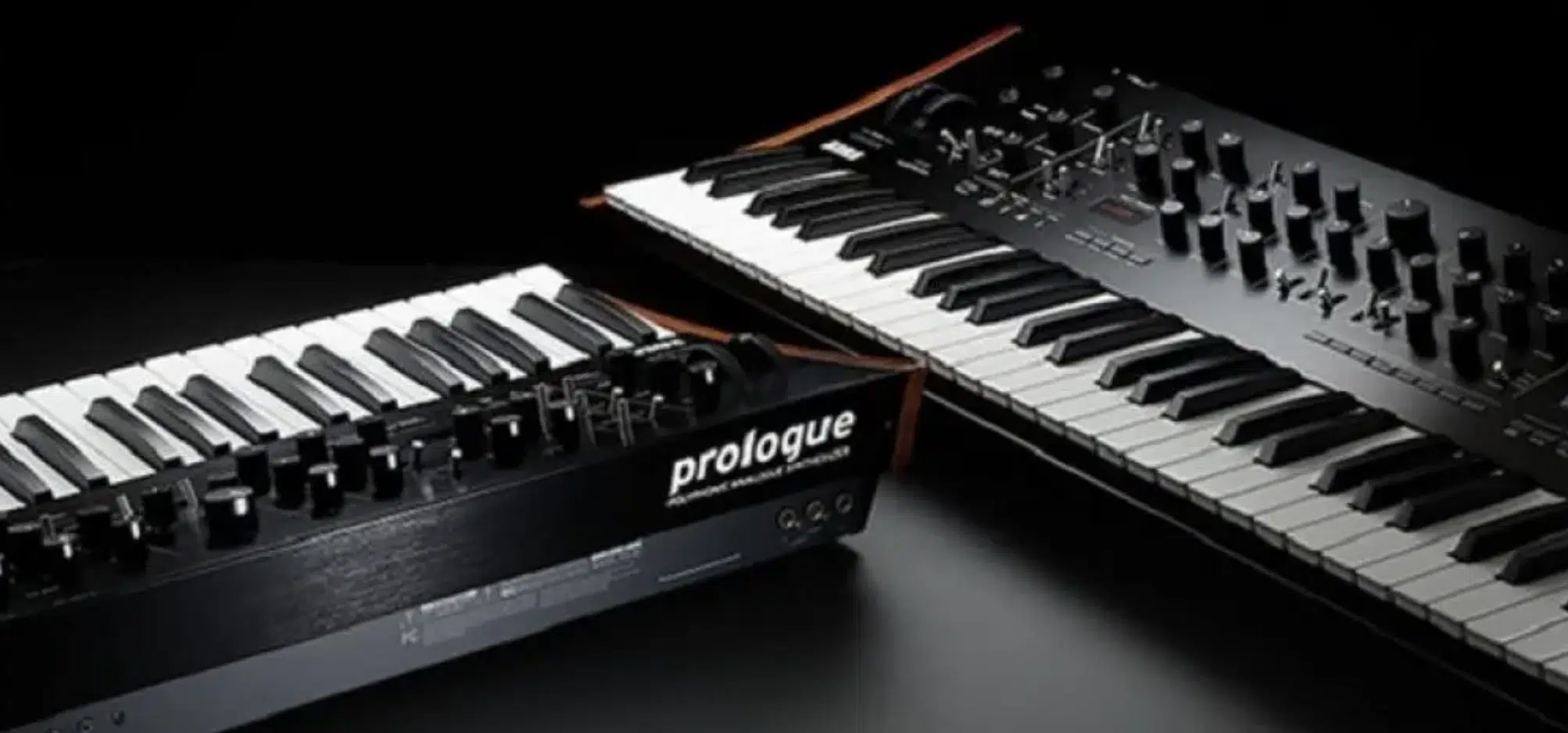
Customizing synthesizer settings according to personal preferences in your account is a crucial part of the creative process.
This could involve:
- Tweaking the oscillators for a desired timbre
- Adjusting the filter and envelope settings for a particular texture
- Using modulation to add movement and interest to the sound
Each musician has their own set of preferences when it comes to synthesizer settings.
It’s all shaped by your musical style and the specific requirements of the project you’re currently working on.
Experimenting with different configurations and setups can help you receive that unique sound that defines one’s musical voice.
NOTE: If you’re confused about anything your synthesizer deals with or offers, there’s no issue with contacting the company.
You can either email them or contact them through their social media page for help.
-
Optional Add-ons for Enhanced Synth Play
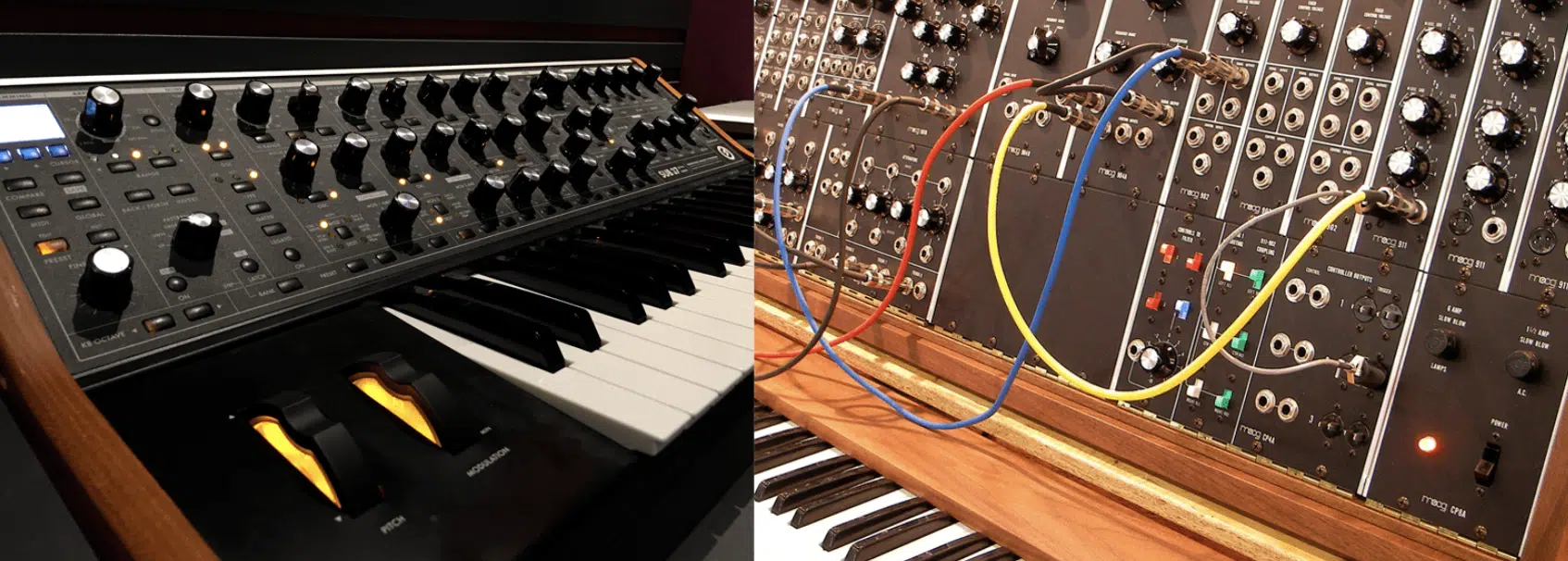
When you order a synthesizer, optional add-ons, and accessories you can request will significantly enhance the capabilities of a synthesizer.
These might involve:
- External modules 一 For additional sound shaping.
- Expanded memory 一 For storing more stock sounds.
- Specialized controllers 一 For more intuitive hands-on control.
These add-ons provide more ways to interact with and manipulate the synthesizer, offering a more immersive and customized experience.
Whether it’s for live performance, studio recording, or just personal enjoyment, these optional components can make a significant difference in how you use your synth.
-
Identifying and Resolving Feedback Issues
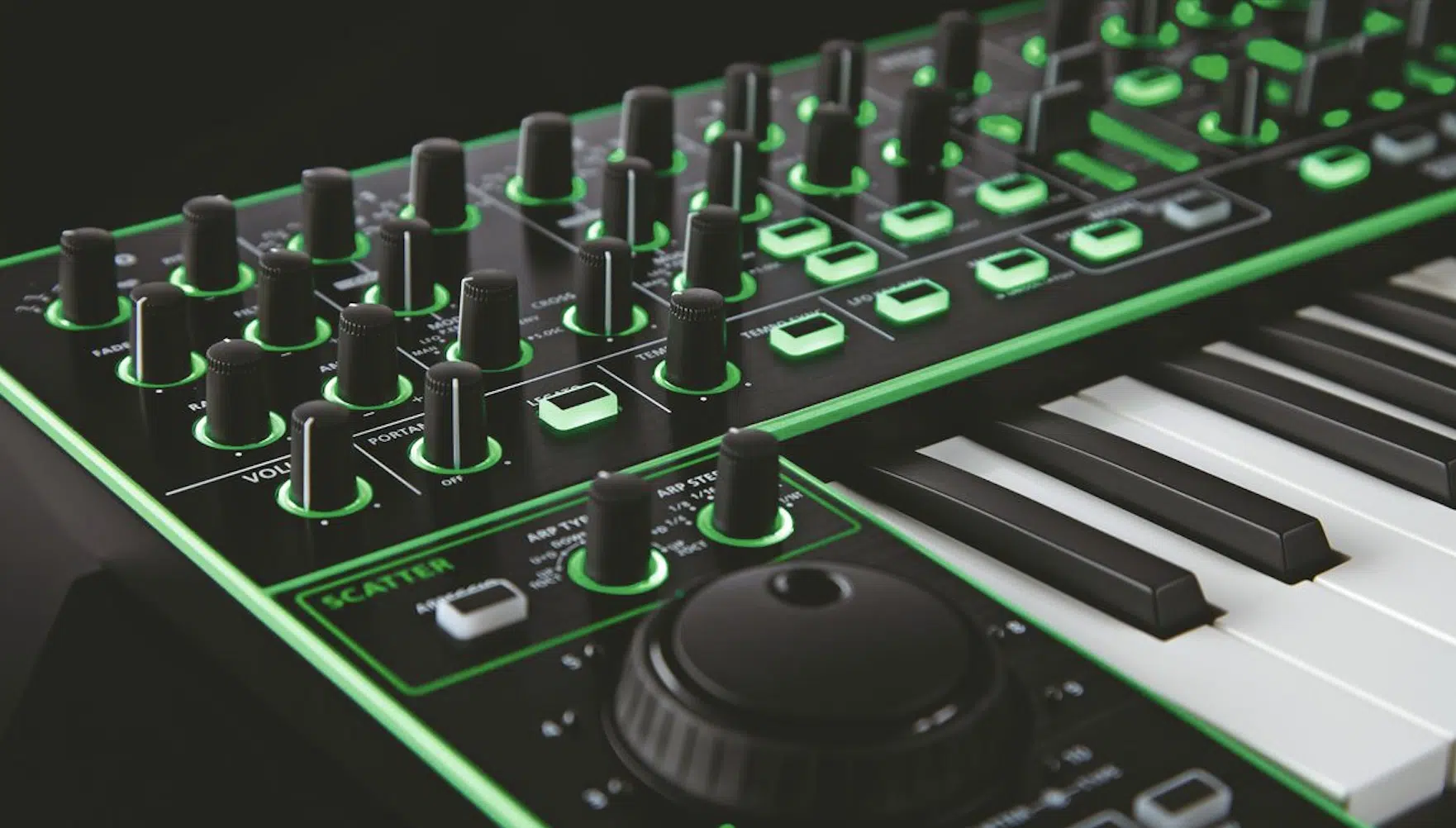
Feedback is a common issue faced by many synthesizer users, especially in live settings or when working with certain sound combinations.
Identifying the source of feedback (whether it deals with an external microphone, an amplifier, or the synthesizer itself) is the first step in resolving these issues.
Once identified, resolving feedback requires:
- Adjusting levels
- Changing the position of speakers or microphones
- Using specific settings on the synthesizer to minimize unwanted noise
Understanding how to quickly and effectively deal with feedback is an essential skill for any synthesizer user.
It can help you achieve a clean and polished sound in any setting 一 which is a sign of a professional.
The Build Quality of Professional Synthesizers

The construction quality of a synthesizer greatly influences its durability, sound quality, and overall user experience.
Professional synthesizers are typically built with high-quality materials that withstand the wear and tear of studio use and live performances.
Attention to detail in the build process, from the robustness of the keys to the durability of the knobs and sliders, is crucial.
High build quality not only ensures longevity but also impacts the tactile feel.
The build of a synthesizer often reflects its sonic capabilities.
For example, synthesizers designed for complex sound manipulation may feature a more comprehensive interface with numerous controls.
This offers greater flexibility and precision in sound design.
Understanding the relationship between a synthesizer’s build and its functionality is key when you invest in equipment that aligns with your specific needs and preferences.
-
Maintaining Your Synthesizer For Longevity
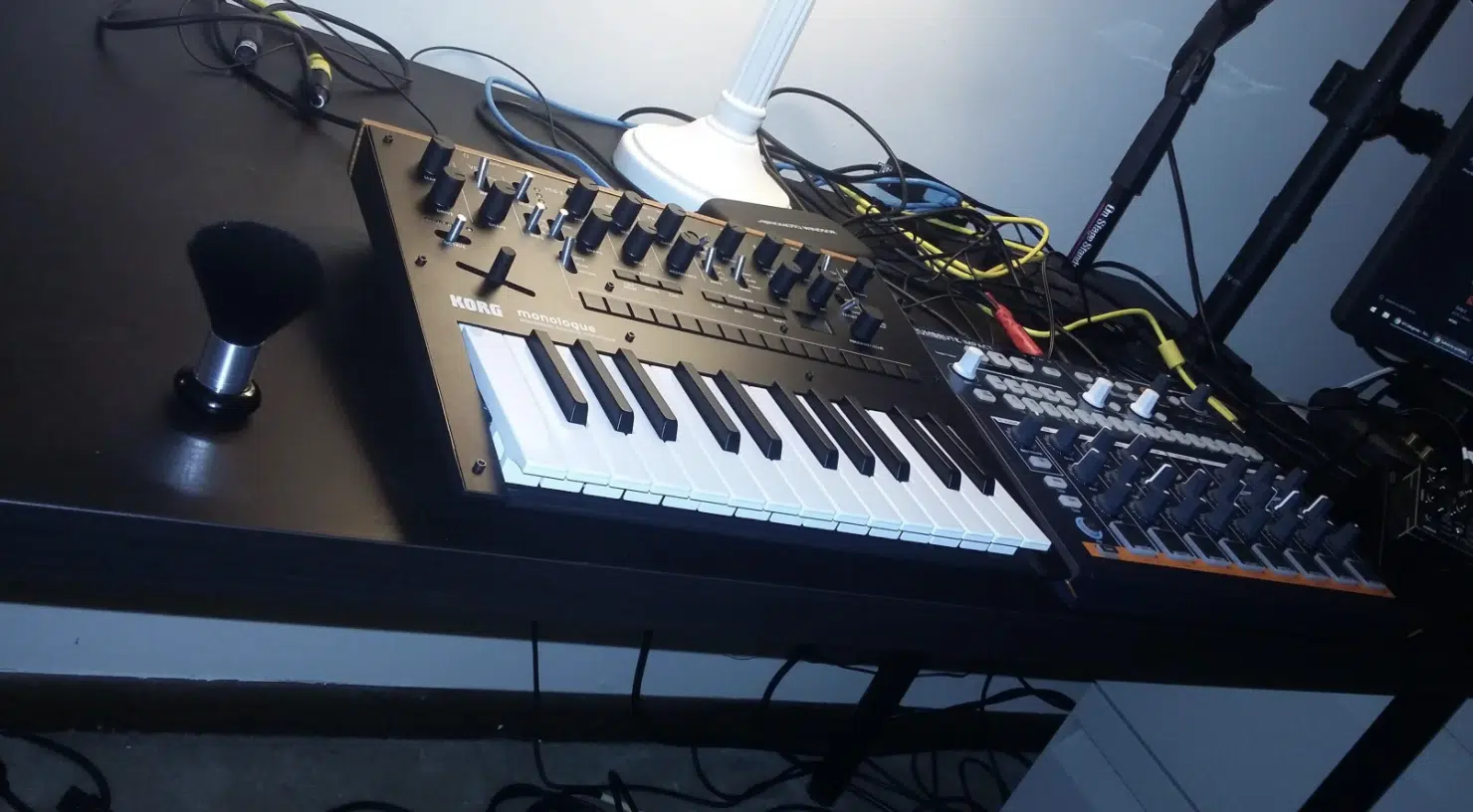
Regular maintenance is vital to keep a synthesizer functioning at its best.
This includes simple routines like:
- Dusting the surface
- Cleaning the connectors
- Ensuring the firmware is up-to-date
Periodic check-ups can prevent common problems like sticky keys or unresponsive knobs, which can hinder performance and creativity.
NOTE: For synthesizers with vintage components, maintenance can be more challenging but equally rewarding.
Preserving these instruments often orders specialized knowledge and a gentle touch, especially when dealing with delicate electronics or rare parts.
Proper care not only extends the life of the synthesizer but also maintains its sound quality 一 which can evolve beautifully over time.
-
Bonus: Diagnosing & Solving Synth Issues
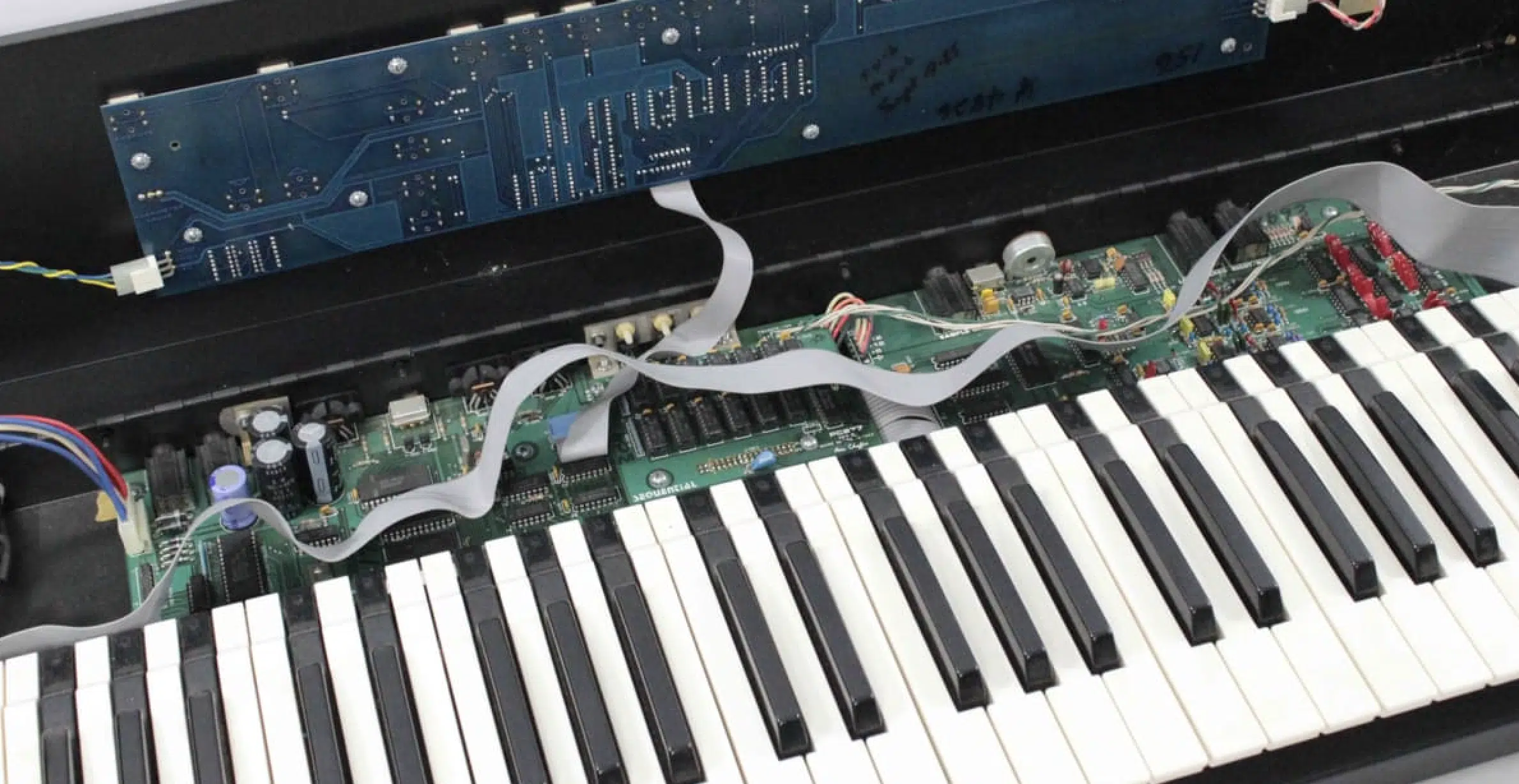
Troubleshooting is an essential skill for synthesizer users and music enthusiasts.
Common problems might be:
- Unresponsive keys
- Unintended distorted sound
- Connectivity issues
Learning to diagnose these problems involves understanding the synthesizer’s signal flow, from input (enter) to output (exit), and identifying where the issue may arise.
Solving these issues may require a range of approaches 一 from recalibrating settings to repairing or replacing hardware components.
In some cases, reaching out to the manufacturer for support or consulting online forums can provide valuable insights (for great savings on what you order, too).
Being proactive in addressing problems enhances the user experience and ensures the synthesizer remains a close, reliable tool.
Final Thoughts
Understanding synthesizers is more than just a technical skill; it’s an art form that opens up a universe of sonic exploration.
Whether you’re customizing your setup with personal preferences and optional add-ons or simply maintaining your gear, each aspect contributes to your development as a music producer.
From the warm, nostalgic tones of analog synths to the precision and versatility of their digital counterparts, we’ve explored how they shape the soundscapes of modern music.
The knowledge you’ve gained here will not only enhance your proficiency but also inspire you to push creative boundaries and explore new musical horizons.
To further elevate your synthesizer journey, the free Serum Essentials pack is invaluable.
This pack contains 16 serum presets, each meticulously crafted to offer the cleanest, most polished, and professional sounds for various genres.
These presets are not just sounds; they’re a canvas for your creativity.
Each preset in the Serum Essentials pack is fully loaded with macros and flexible parameters 一 allowing you to tweak, customize, and truly make each sound your own.
The versatility and quality of these presets align perfectly with everything we’ve discussed, providing you with an invaluable resource to apply your newfound knowledge and skills.
Embrace these tools, let your creativity flow, and watch as you transform your musical ideas into reality, synthesizing sounds that captivate, inspire, and move your audience.
Until next time…







Leave a Reply
You must belogged in to post a comment.